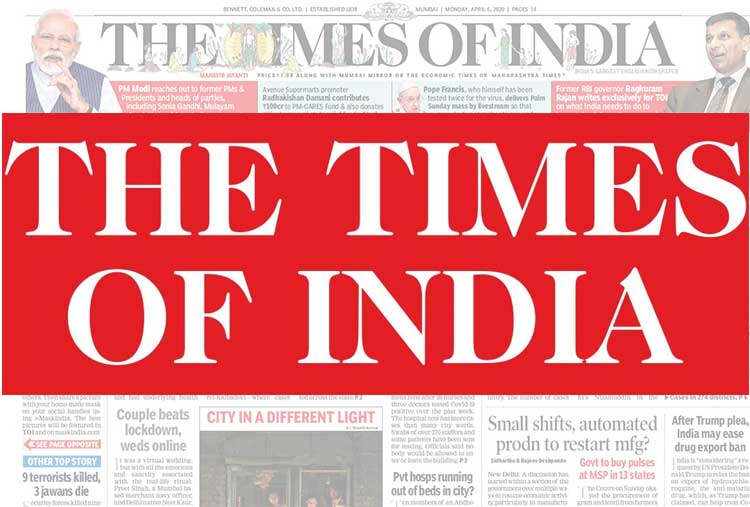
The Times of India (TOI) is a cornerstone of Indian journalism and one of the country's oldest and most influential newspapers. Founded in 1838, it has grown from a modest colonial publication into a national institution, shaping public discourse, reflecting social changes, and maintaining journalistic excellence over the decades.
Historical Beginnings
The Times of India was established as The Bombay Times and Journal of Commerce in 1838 to serve the small European community in the then British-ruled Bombay (now Mumbai). The paper focused on business news and had a limited audience. It was renamed The Times of India in 1861 after merging with other publications and broadening its editorial scope to cover news and issues pertinent to the Indian populace.
Under British ownership initially, TOI played a significant role in reporting on India's independence movement. Its reporting on pivotal events, such as the Salt March and Quit India Movement, helped document the country’s struggle for freedom.
Post-Independence Evolution
After India gained independence in 1947, The Times of India underwent significant changes. Bennett, Coleman & Co. Ltd., the publishing house that owns TOI, saw new Indian ownership, with the Jain family becoming the primary stakeholders in the 1940s. This transition marked a new era for the newspaper, positioning it as a voice for a newly independent India.
In the post-independence period, TOI expanded its reach and influence. The newspaper adopted a more inclusive approach, catering to India's diverse linguistic, cultural, and political landscape. It launched regional editions and supplements to appeal to a broader audience.
Technological and Editorial Innovations
TOI has been a pioneer in adopting new technologies and journalistic practices. The paper was one of the first in India to implement computerized typesetting in the 1980s, which significantly enhanced the efficiency of its operations. The advent of the internet in the 1990s brought further transformation, with TOI launching its website, making it one of the first Indian newspapers to establish an online presence.
The digital era has seen TOI innovate with multimedia content, including video news, podcasts, and interactive graphics. The Times of India website and mobile app provide real-time updates, in-depth analysis, and a wide range of content, catering to the changing consumption habits of its audience.
Coverage and Contributions
The Times of India covers many topics, from politics and economy to sports and entertainment. Its investigative journalism has uncovered major scandals and corruption cases, holding those in power accountable and fostering transparency. TOI's editorial stance is known for being balanced, striving to present multiple perspectives on complex issues.
The newspaper’s supplements, such as the Sunday Times, Times Life, and Times Crest, offer specialized content on lifestyle, culture, and other areas of interest, further enhancing its appeal to diverse reader demographics.
Social Impact and Criticisms
TOI has had a profound impact on Indian society. Its campaigns on social issues, such as the "Teach India" initiative to promote education and "Lead India" to encourage civic leadership, have garnered widespread acclaim and participation. These initiatives underscore the newspaper’s commitment to contributing positively to society beyond mere reporting.
However, TOI has also faced criticism. Some argue that its increasing focus on entertainment and sensationalism, often called "Page 3" journalism, sometimes overshadows more serious news coverage. Additionally, concerns about editorial independence and the influence of corporate interests have been raised, given its ownership structure and advertising-driven revenue model.
Looking Ahead
The Times of India continues to be a dominant force in Indian media. As it navigates the challenges of the digital age, including the rise of social media and the proliferation of fake news, TOI remains committed to its core values of journalistic integrity and public service. Its ability to adapt to changing media landscapes while maintaining a commitment to quality journalism ensures that it will continue to play a vital role in shaping India’s future.
In conclusion, The Times of India is more than just a newspaper; it is an institution that has witnessed and influenced the course of Indian history. With its rich legacy, commitment to innovation, and dedication to upholding journalistic standards, TOI remains a trusted news source and a vital part of India's democratic fabric.




